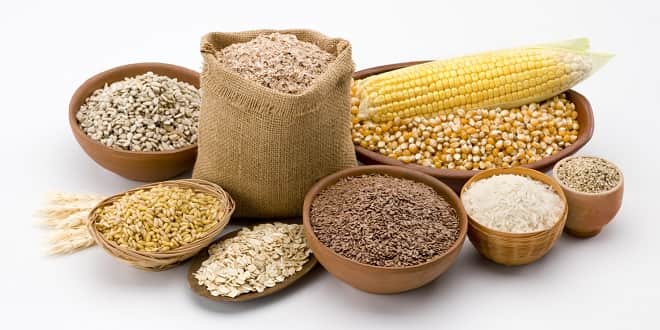POST-HARVESTING PROCESSING
1.-Total post-harvest cereal system
General information
Each type of cereal requires a specific post-harvest treatment, however, there are certain general principles that apply to most of them.
Cereals undergo a number of processing stages between harvest and consumption. This chain of processes is often referred to as the total post-harvest system. The post-harvest system can be split into three distinct areas.
The first is the preparation of harvested grain for storage. The second, which is referred to as primary processing, involves further treatment of the grain to clean it, remove the husk or reduce the size. The products from primary processing are still not consumable.
The third stage (secondary processing) transforms the grains into edible products. Primary processing involves several different processes, designed to clean, sort and remove the inedible fractions from the grains.
Primary processing of cereals includes cleaning, grading, hulling, milling, pounding, grinding, tempering, parboiling, soaking, drying, sieving.
Secondary processing of cereals (or ‘adding value’ to cereals) is the utilisation of the primary products (whole grains, flakes or flour) to make more interesting products and add variety to the diet. Secondary processing of cereals includes the following processes: fermentation, baking, puffing, flaking, frying and extrusion.
Puffing. Puffed grains are often used as breakfast cereals or as snack food. During puffing, grains are exposed to a very high steam pressure which causes the grain to burst open. The puffed grains can be further processed by toasting, coating or mixing with other ingredients.
Flaking. Flaked cereals are partially cooked and can be used as quick-cooking or ready to eat foods. The grains are softened by partially cooking in steam. They are then pressed or rolled into flakes which are dried. The flakes are eaten crisp and should have a moisture content of below 7%.
Fermentation. Doughs made from cereal flour can be fermented to make a range of products.
Baking. Doughs and batters made from cereal flours are baked to produce a range of goods.
Extrusion. Extrusion involves heating and forcing food (usually a dough) through a small hole to make strands or other shapes. The extruded shapes then undergo further processing such as frying, boiling or drying. Extruded products include pastas, noodles, snack foods and breakfast cereals. Projects and small businesses may involve only one or several of the activities in the total chain, from the growing of crops through to the production of edible products. Some small businesses are set up to clean and package wholegrains. These businesses can be successful as there is very little need for equipment. However, as with all businesses, there must be a clear demand for the product.
…

